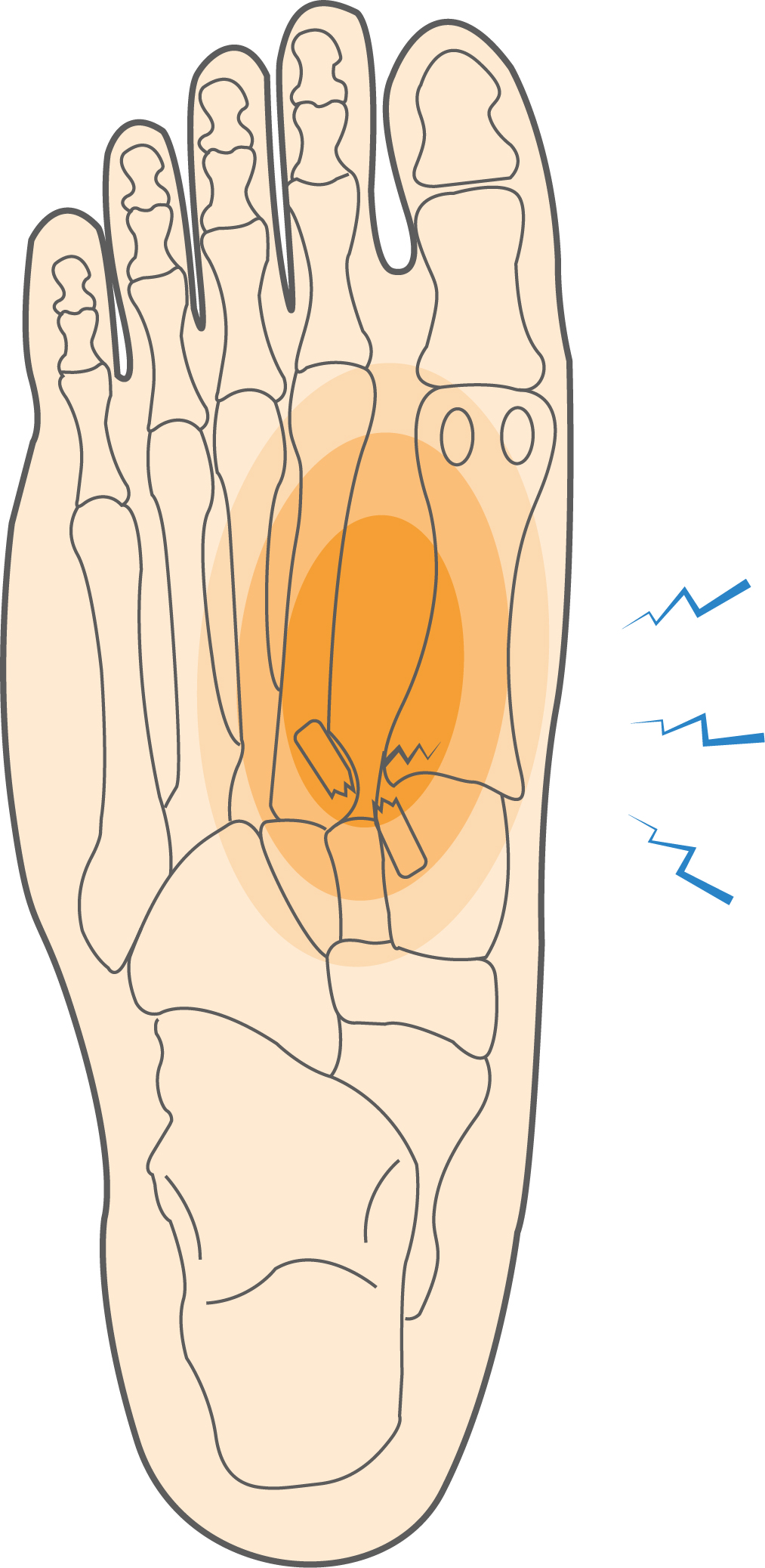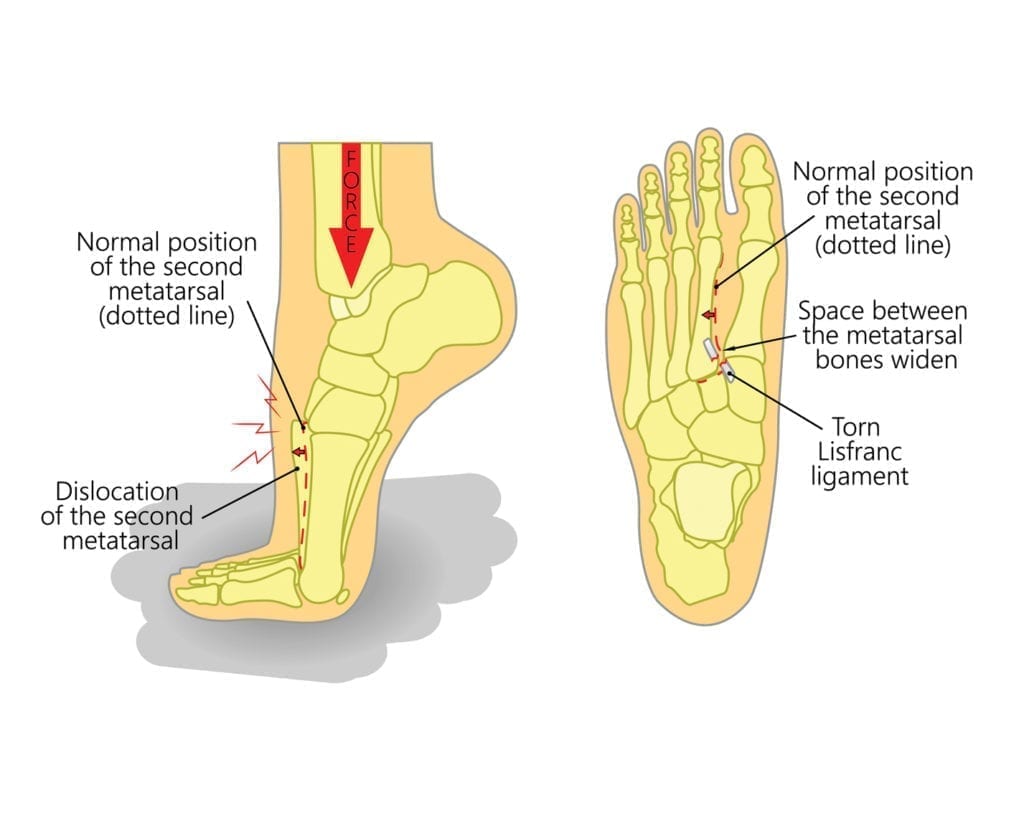Lisfranc sprains and fractures are injuries that occur to the Lisfranc joint complex located in the middle region of the foot. The midfoot is home to a number of bones, ligaments, and muscles. For this reason, an injury to the Lisfranc joint can oftentimes be complex. There are three layers of ligaments in the Lisfranc joint that can be affected by injury:
• Dorsal (on top of the foot)
• Plantar (on the bottom of the foot)
• Interosseous (between the dorsal and plantar ligaments)



